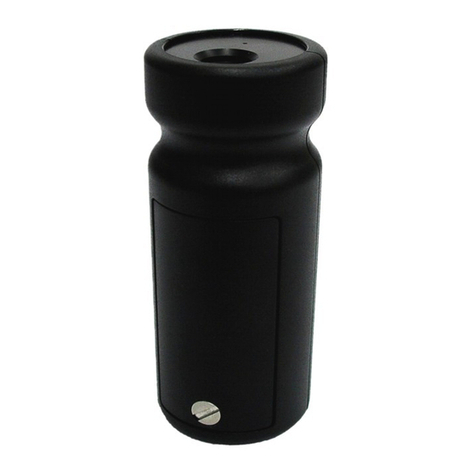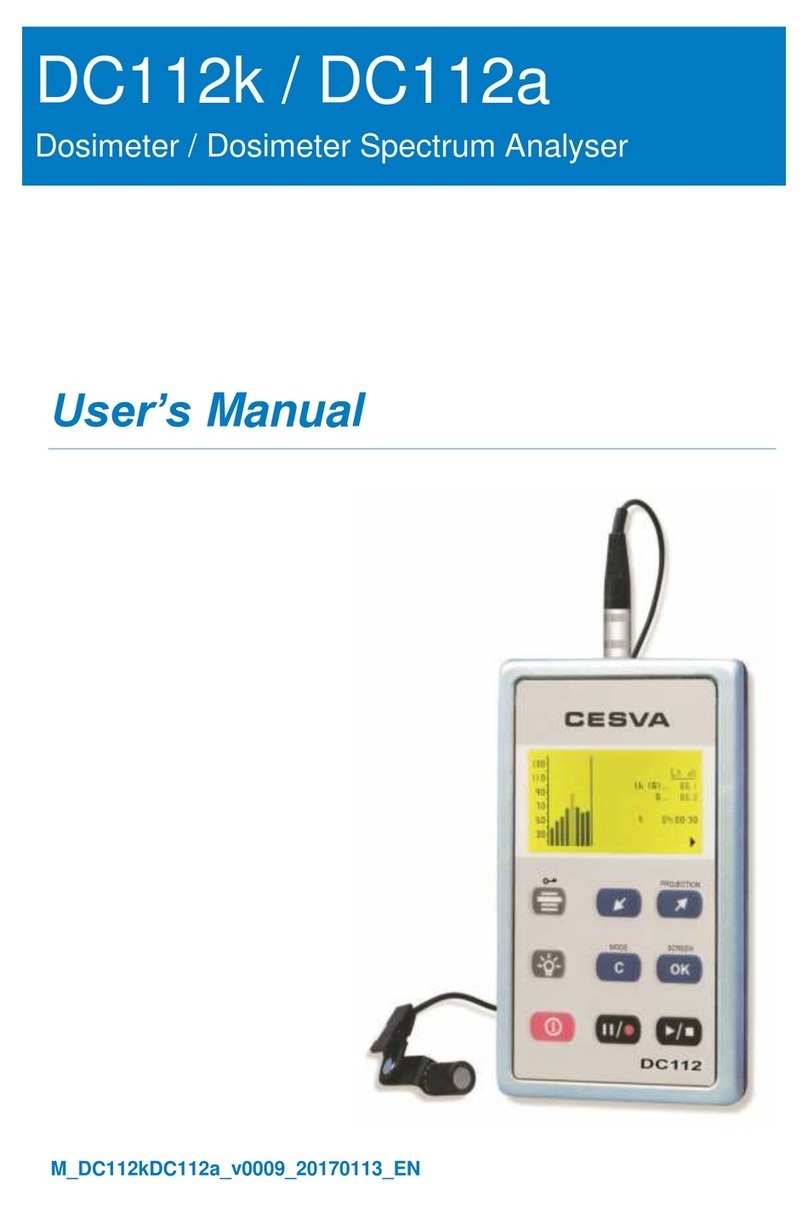
Chapter 3 General description of the device 5
Proper verification of the sound level instruments is essential before and after
each series of measurements. The CB011 and CB012 acoustic calibrators
provide maximum reliability when performing these verifications.
The CB011 has been specially designed to verify class 1 and class 2 dosimeters
and sound level meters, and the CB012 to verify class 2 dosimeters and sound
level meters. These calibrators comply with UNE-EN IEC 60942:2019 class 1
(CB011) and class 2 (CB012).
Both calibrators are portable and very easy to use, which makes them useful for
verifying sound measuring instruments both in the laboratory and at the point of
measurement. The CB011 and CB012 generate a sound pressure level of 94 dB
(re 20 µPa) at a frequency of 1 kHz.
In addition, thanks to their internal structure and operating mode, they avoid
having to apply corrections for environmental conditions.
1.1 Main characteristics of the CB011 and CB012
The following features of the CB011 and CB012 should be noted:
They can be used with any microphone capable of being verified in a closed
cavity and with a diameter of ½".
They are recommended for the C-130, C140, C-250, C240, P05,
and P008 microphones.
The operation of these calibrators is based on a feedback system. The CB011
and CB012 have an internal microphone to check that the signal generated
through the speaker is always correct. This avoids having to apply any type of
correction, since the level generated is independent of the environmental
conditions in which the device is located.
Both the CB011 and CB012 are operated with just one button. When pressed,
the calibrator generates a sound pressure level of 94 dB and uses 1 kHz as
the verification frequency, eliminating the need for corrections due to
frequency weightings, since these are zero at this frequency.
These calibrators also have a permanent on mode for long-term use.
The CB011 and CB012 calibrators have a protection system that prevents the
device from being turned on unintentionally, both after use and due to
accidental turned on.
General description of the device
3. General description of the device































